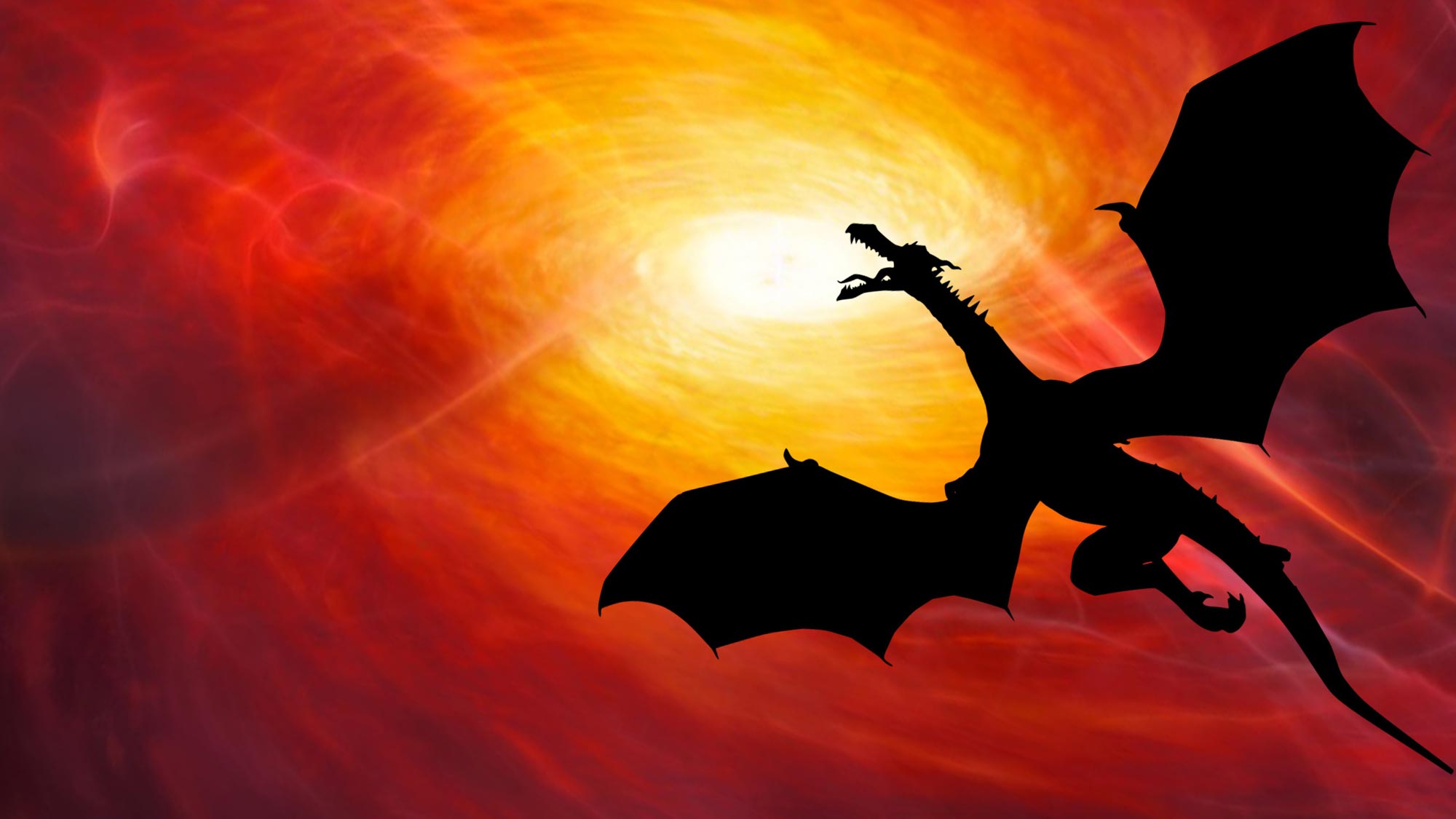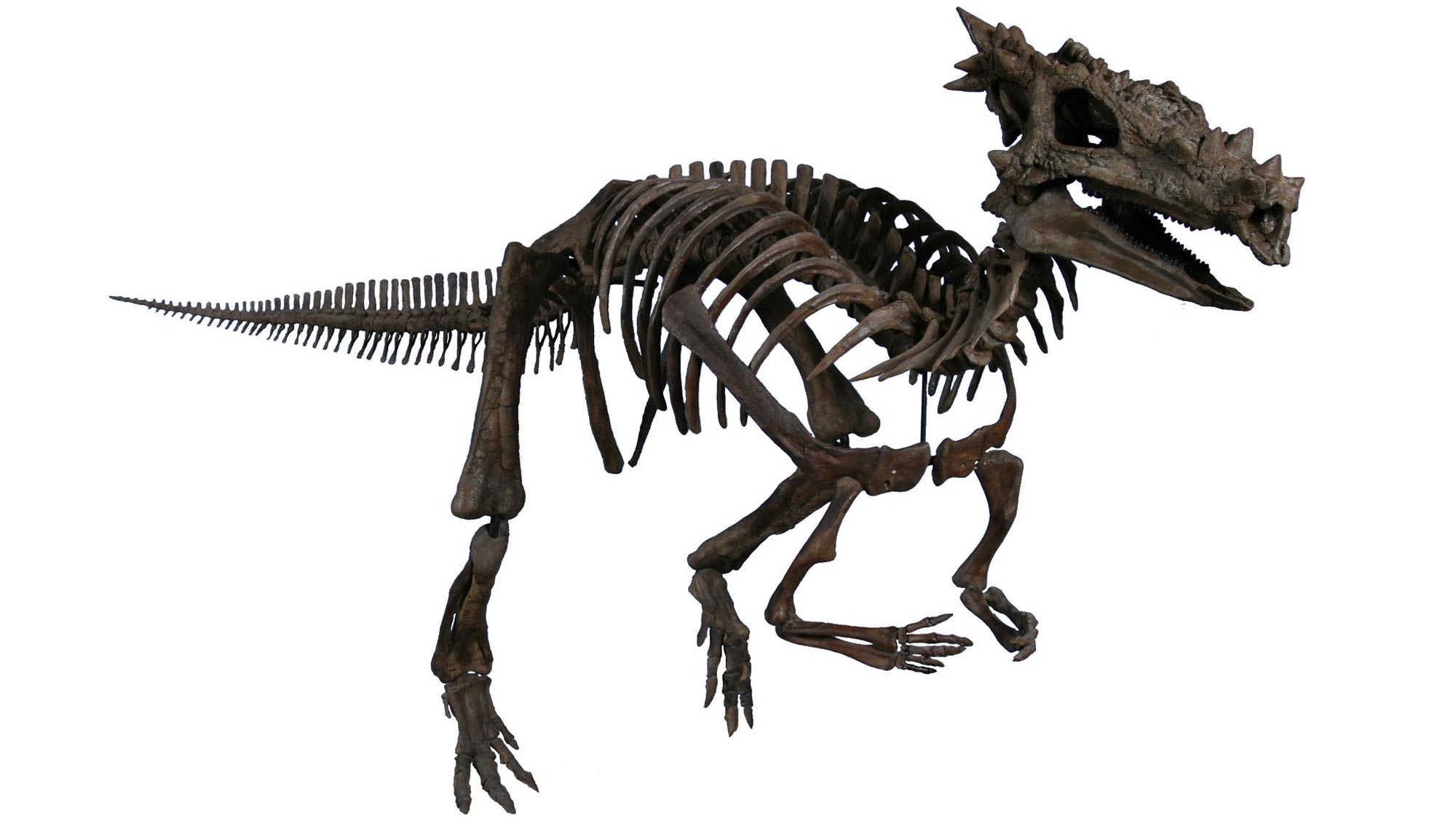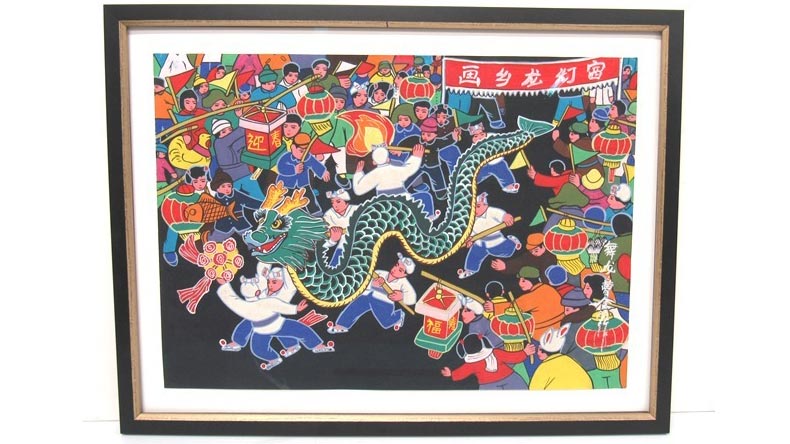
From the thrilling race to Dragon's Edge with Hiccup and Toothless to facing down a Hungarian Horntail in the Triwizard Tournament, dragons ignite our imaginations. They soar across screens and pages, embodying power, danger, and untamed magic. But have you ever wondered if these incredible creatures from How to Train Your Dragon or the wizarding world of Harry Potter could actually exist?
We’ll let you in on a secret—dragons are real. And one is right here at The Children's Museum!
Well, sort of.
Dracorex hogwartsia proudly stands on disply on Level 2 at the museum. Its name literally means "Dragon King of Hogwarts," a direct nod to the beloved Harry Potter series! With its impressive crown of horns and bumps, it certainly looks like something dragged from myth. So, does this mean dragons once roamed the Earth?
It all comes down to words, discoveries, and biology.

What Exactly is a Dragon?
If we asked you to describe a classic dragon—maybe like the fearsome beasts guarding Gringotts bank—we bet you’d mention huge size, tough scales, four legs, powerful wings, a whipping tail, and, crucially, the ability to breathe fire, right?That image, however, evolved over time. The word “dragon” comes from the ancient Greek “drakon,” meaning “serpent” or “big snake.” While we know snakes don't have legs or breathe fire, the word morphed over centuries, particularly in Europe, to describe the mythical winged, fire-breathing reptiles we envision today.
Did Ancient Fossils Spark the Legends?
Let's step back in time...Millions of years ago, dinosaurs roamed Europe. While we've only understood paleontology for less than 200 years, their fossils have been weathering out of the ground for as long as humans have walked the Earth.

The Science Behind Why Dragons Stay in Fantasy
So, why don't creatures like Toothless or a Ukrainian Ironbelly actually exist? Let's look at the biological facts:His plasma blast, however, is pure fantasy.
Breathing fire sounds incredibly cool, whether it's the simple flame of a Common Welsh Green or the specialized blasts of a Deadly Nadder. But biologically? It's a non-starter.
We've never seen an animal that could generate fuel, ignite it safely on command, and protect itself from the intense heat internally and externally. There's simply no evidence in nature or the fossil record to suggest it ever happened.
The Size Problem
Many beloved dragons are enormous—think of the island-sized Bewilderbeasts or the massive Gringotts dragon.
Real-world physics—specifically the square-cube law—makes flight incredibly difficult for large, heavy creatures. They'd need impossibly large wingspans, phenomenal muscle power (adding even more weight), and metabolic rates far beyond any known vertebrate just for liftoff, let alone agile flight.
Enter the 'Dragon King of Hogwarts'
This brings us back to our Dracorex hogwartsia. What does this real fossil tell us?- It had a fantastically "dragon-like" head with spikes and knobs—perfect for inspiring myths
- Critically, it had two arms and two legs—no wings
- There's zero skeletal evidence for any fire-breathing ability
- It was a plant-eating dinosaur from the Late Cretaceous period

Not All Myths are the Same
By the way, it's worth noting that the classic fire-breathing, four-legged, winged monster is mainly a European concept. Traditional East Asian "dragons" (like the Chinese lóng) are often wingless, serpentine beings associated with water, luck, and natural forces – generally not depicted as malevolent monsters. Europeans later applied their "dragon" label to these distinct mythical beings. So, even the idea of a dragon isn't universal.
Where Fantasy Meets Reality
So, what do you call creatures with tough skin, four legs, long tails, big heads, but no wings or fire? Today, we call them dinosaurs! We study their fossil clues not to find mythical beasts, but to learn about the incredible, real life that existed long ago.While science tells us that dragons like those Hagrid or Hiccup might encounter belong firmly in the realm of fantasy and magic, their power in our stories is undeniable. And perhaps the next best thing to seeing a "real" dragon is visiting our museum to meet the amazing Dracorex hogwartsia and its pals! With specimens like Bucky the Teenage T. rex, an Allosaurus and two giant long-necked, four-legged saurupods uncovered by our paleo team at the Jurassic Mile® dig site in Wyoming, Kelsey the Triceratops, and many others, Dinosphere®is chock-full of amazing fossils that probably inspired a mythical creature or two over the years.
It’s a fantastic link between the creatures of legend and the genuine wonders of our planet's prehistoric past.
Buy Tickets

















